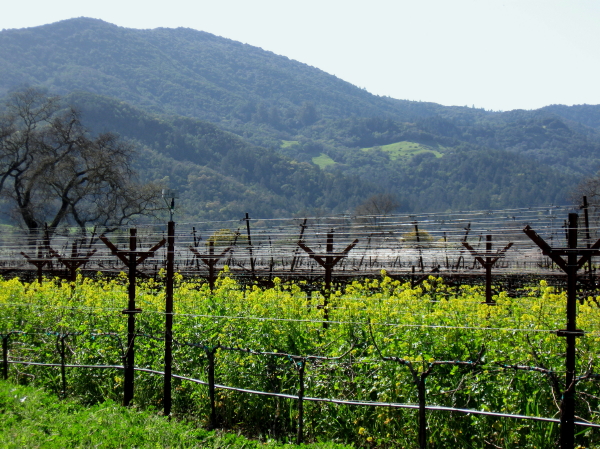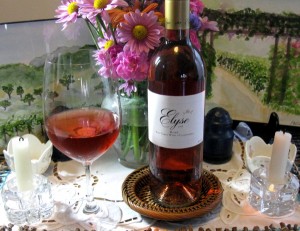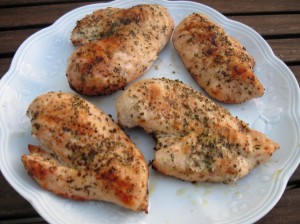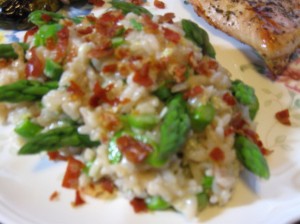Feb 03 2011
Show Some Love & Drink the Pink
Who says that you cannot enjoy Rosé in the winter? I personally enjoy them when the weather warms and the sun shines abundantly. Yet on a February evening when the fire place houses a toasty fire and candlelight glows, Rosé takes on a warm hue and its aromas and flavors open up.
Rosé wines vary depending on the grape varietal used to make the wine and the winemaking method selected by the vintner. There are three (3) ways to make Rosé: (i) skin contact; (ii) saignée; and (iii) blending. “Skin contact” method involves crushing red skin grapes and only allowing the grape skins to have contact with the juice for a brief period of time. The grape skins contain tannins and other compounds which affect the flavoring of the wine. If this first method is used, the Rosé will taste more like a white wine. The second and more popular method of making Rosé in Napa Valley is “Saignée”. When the winemaker wants to give his or her Rosé more flavor or color, he or she will choose this method because it involves bleeding the juice from the “must”. “Must” is freshly pressed grape juice which contains seeds, grape skins and stems of the fruit. The grape juice is removed from the “must” at an early stage and reserved to make Rosé wine, showing that classic pink coloring. The third method of making Rosé is “Blending” and is the least common of the three. This method is to mix red wine with white wine in order to impart color to the resulting Rosé. This last method is typically only reserved for making Rosé sparkling wines.
Elyse Winery (“Elyse”) in Yountville has truly captured the dry style of Rosé wines characteristically made in France. Most Rosé made in California tends to have a sweeter and almost juicy flavor which does not mirror the traditional French style. Elyse, however, is the exception in that their winemaker has captured this truly elegant dry style. Also, Elyse is unique with its Rosé as it is composed of fifty-six percent (56%) Valdiguié, thirty-four percent (34%) Carignane and the remainder is comprised of various percentages of grapes such as Grenache and Mourvèdre, among others. On the nose, you will find a faint hint of strawberry and aroma of melon. While these flavors follow on the palate, there are lovely flavors of raspberry kissed by watermelon and a finish seduced by baked rhubarb. While Rosé may serve best during summer months chilled, it shows off a different depth with seasonal ripe berry fruit when served at almost room temperature during the winter. No matter what season hosts this wine, a lovely sea salt flavor is present which pairs well with prosciutto, ham, apricots or parmesan cheese.
To demonstrate the seasonal versatility of Rosé, this week’s menu hosts:
1) Butter Grilled Herbed Chicken;
2) Prosciutto-Asparagus Risotto de Rosé; and
3) Roasted Brussel Sprouts with a Prosciutto-Raspberry Champagne Vinaigrette.
Collecting marjoram, lemon thyme and crushed sage from the backyard, the herbs are gently rubbed into trimmed chicken breasts before set atop a charcoal grill. While slow grilling, the chicken is brushed with melted butter to baste. Emerging from the grill, the chicken is fragrant, moist and a reminder that warmer grilling months will be here before one knows it.
Many risottos are made with a cup of dry white wine. This week I elected to use Elyse’s dry Rosé in my risotto recipe to infuse the bright fruit flavors of the wine. Despite the pinkish hue of the wine, the rice only took on a slight salmon or rose petal hue.
Included in the recipe are blanched fresh seasonal asparagus, shallot, garlic, juice from a Meyer Lemon from the back patio, freshly picked lemon thyme and crispy bits of prosciutto. Instead of relying on a traditionally added parmesan cheese, a cheese containing a mix of parmesan and gouda cheese was added to increase the creamy nature of this risotto. The result is a risotto dish that is deliciously rich in depth as its spectrum of flavors flirt with daydreams of spring yet pull back seasonally to February in California.
If growing up you were prompted or mandated to eat your brussel sprouts, you will not need any prodding with my Brussel Sprouts in Prosciutto-Raspberry Champagne Viniagrette. Quartered brussel sprouts are tossed in olive oil, raspberry champagne vinegar, a dash of balsamic vinegar and freshly cracked black pepper before being tucked into the oven to roast. While in the oven, a prosciutto vinaigrette is quickly whisked together to dress the later emerging roasted vegetable goodness. Brightened by raspberry champagne vinegar, seasonal brussel sprouts take on a lively flavor with vinegars caramelizing in the oven.
Conclusively, each bite of each dish causes the salt to subside and fruit flavors to burst through in the wine. The clean bright flavors in food captivate the senses. Ironically all three dishes are good as leftovers served cold. So if you find yourself in Napa Valley on a sunny 65 degree February day, open a bottle of Elyse’s Rosé and picnic among the blooming mustard and simply “think spring”.
Comments Off on Show Some Love & Drink the Pink






